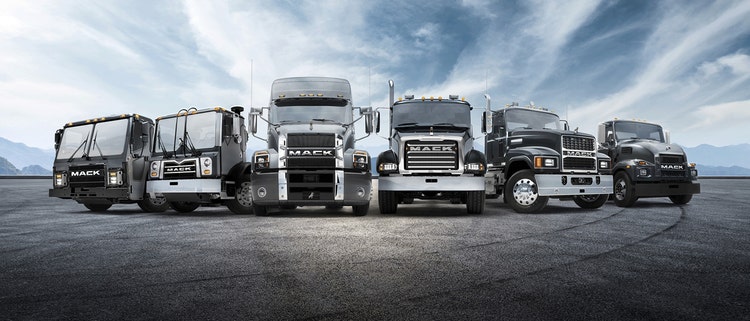The U.S. trucking industry is facing plenty of challenges these days – rising fuel prices, supply chain issues, and more. However, one of the most urgent problems is the shortage of truck drivers. It’s estimated that the current shortage is around 80,000, which is enough to cause serious problems. Unfortunately, this number is projected to double by 2028. The question is, what’s causing this problem – and what can be done to fix it?
Anyone who stays up to date on news for truckers will know that the driver shortage is a complex issue. There are several different contributing factors, and not all of them can be fixed. That being said, some of them do have solutions; they just aren’t being implemented. It’s definitely a tricky situation for the industry as a whole, and will likely take years to address, let alone resolve.
Contents
Why a truck driver shortage could affect more than just the trucking industry

The way things are now, the shortage of drivers hasn’t really affected the lives of the average person. Sure, it’s having an effect on transportation and related industries, but most consumers haven’t personally experienced the consequences of the shortage for themselves.
The concern isn’t just over the present lack of drivers, but what could happen if it gets worse. The U.S. economy depends heavily on truck drivers, as they’re essential for transporting food, medicine, fuel, and other essential goods across the country. If the flow of goods ends up being interrupted, this could result in people hoarding items that are in short supply.
Everyone remembers what happened when people were panic-buying toilet paper at the beginning of the COVID-19 pandemic. Even though there weren’t any problems with the actual manufacture or supply of toilet paper, the quantities that people were hoarding were enough to cause shortages. Now imagine if everyone was trying to get their hands on things like food, medications, or fuel – but these things really were in short supply, due to a lack of drivers to transport them to retailers. This is what experts say could happen, and why 2023’s truck driver shortage could be 2028’s supply chain issues.
The main factors causing the driver shortage
A deep dive would probably reveal dozens of reasons why there aren’t enough truck drivers. However, experts agree that these are the main issues contributing to the problem.
- Stagnant wages
If you’re only looking at data from the last few years, truckers’ salaries have increased. This is mainly in response to shortages, since most trucking companies are having a hard time recruiting enough drivers. However, the big picture shows that when you account for inflation, drivers are making about 50% less compared to what the job paid in 1980.
- Aging workforce
The age of the average truck driver in the U.S. is 48. Many truckers are approaching retirement, but not enough younger drivers are being recruited to replace them. Oddly enough, part of this problem has to do with commercial driver’s license laws. You have to be 16 to get a regular driver’s license, but you have to be 21 for a commercial driver’s license. This means that by the time someone is old enough to get the appropriate license and apply for a trucking job, they’ll probably already have another job or career, and won’t even consider being a trucker.
- Predominantly male workforce
Anyone who sees the word “truck driver” probably thinks of a man, and that’s a reasonable assumption – only 6% of truck drivers are women. However, experts say that the trucking industry should consider recruiting women for unfilled trucking jobs, since they represent a massive untapped workforce that could help resolve driver shortages.
- High turnover rates
The trucking industry has one of the highest turnover rates of any U.S. industry, at about 89%. This particular issue highlights one of the vicious cycles that’s persisted for years. New recruits are hired, and trucking companies push to get the highest possible profits from them before they leave. The new recruits are overworked and underpaid, and decide to leave (often within a year of being hired). Then more people are hired, and the cycle starts all over again.
- Poor working conditions
Most truck drivers hardly even know what a work-life balance is. They could end up working up to 70 hours per week, spend one day at home for every seven days on the job, and travel routes that take them hundreds of miles from home. Remuneration practices also tend to be predatory; trucking companies usually pay per mile, which cheats drivers out of compensation for time not spent driving. When they have to stop for gas, traffic jams, loading/unloading, or anything else that doesn’t involve driving, that’s time on the job that they aren’t getting paid for.
What are some solutions that could reduce the shortage of truck drivers?
As you can see, this is a multi-faceted issue. However, there are some practical solutions that could relieve the pressure for both drivers and trucking companies.
- A better work-life balance for drivers
The way things are now, most trucking companies have policies that are designed to squeeze profits out of drivers before they quit. If these policies are relaxed so that the drivers have a healthier work-life balance, it’s likely that turnover rates will start going down.
- Fair compensation
Along the same lines, truck drivers often feel like they’re getting cheated out of fair payment for their time due to predatory compensation policies. If this was changed in their favor, it’s likely that the trucking industry wouldn’t have such a hard time recruiting (and retaining) drivers.
- Improved recruiting practices
If trucking companies started recruiting younger people and women as drivers, they could end up with a larger pool of potential candidates to fill the driver shortage.
The takeaway
The truck driver shortage has been an issue for years, and it isn’t going away anytime soon. That being said, there are several ways for the trucking industry to address the problem; it’s just a matter of taking concrete steps in the right direction.

